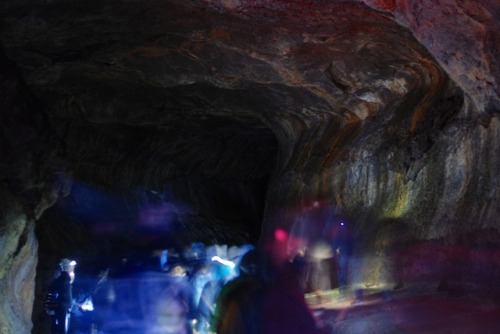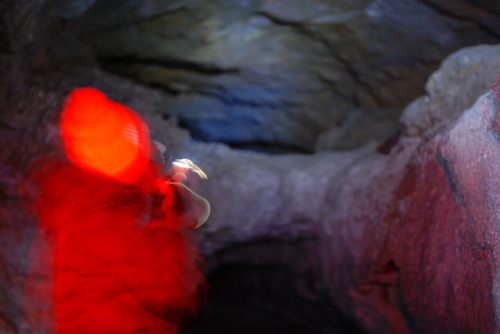adventurous-watermelon: Ape Cave in Washington is the third-longest lava tube cave in North America
adventurous-watermelon: Ape Cave in Washington is the third-longest lava tube cave in North America (and one of the most visited). It sits within a basalt flow that unusually sprouted from the toe of nearby Mount Saint Helens, the only significant basalt flow this volcano has produced in recent time. The cave is less than 2,000 years old, and stretches for over 3,400 meters underground (13,200+ feet). The walls are covered in bacterial slime that supports a unique and important ecosystem.There is some fascinating geology associated with this cave. Not only is it rather unique in its local volcanic setting on the slopes of a stratovolcano, but the lava flow that produced the cave behaved quite fascinatingly. As this insulated channel of lava within the lava tube flowed downhill, it eroded into neighboring rock (called country rock in some papers), causing the lava tube to extend into rock that is not part of a lava flow! In a few places, the surrounding ground (old pyroclastic flows) can be seen where the glazed lava lining has peeled away, revealing the unexpected rock.This is a difficult cave. The lower section (main entrance) is quite easy, easily accessed by most people, and has most of the interesting features. The upper 10,000-or-so feet of cave is quite intense. Crawling through, over, and around old collapse (called breakdown) and scaling lava falls and navigating around ponds and lakes is thrilling, not for the faint-of-heart, and intense. It is very rewarding, but make sure each person has at least two lights with them, because there is no light at all underground. Cave safely, cave softly.About these photos: I took these with a Nikon D80, with 50mm f/1.4. The specific parameters (and the rest of the photos) can be viewed at the Flickr album for this trip. -- source link
Tumblr Blog : adventurous-watermelon.tumblr.com




